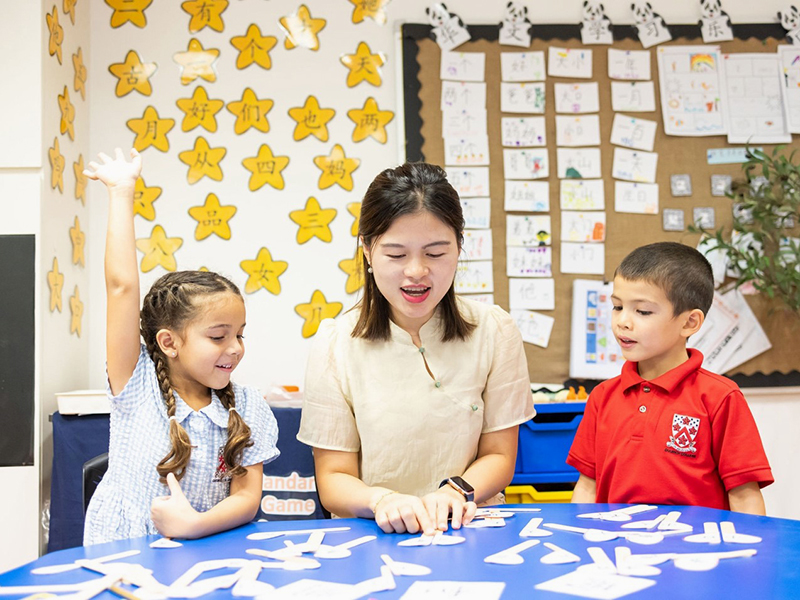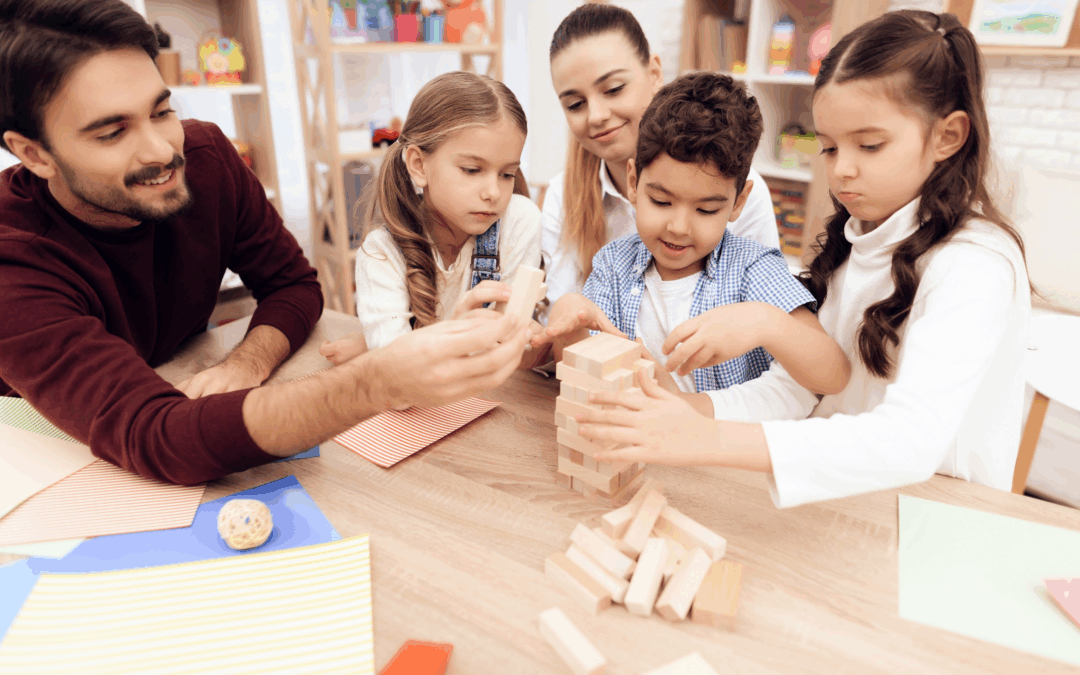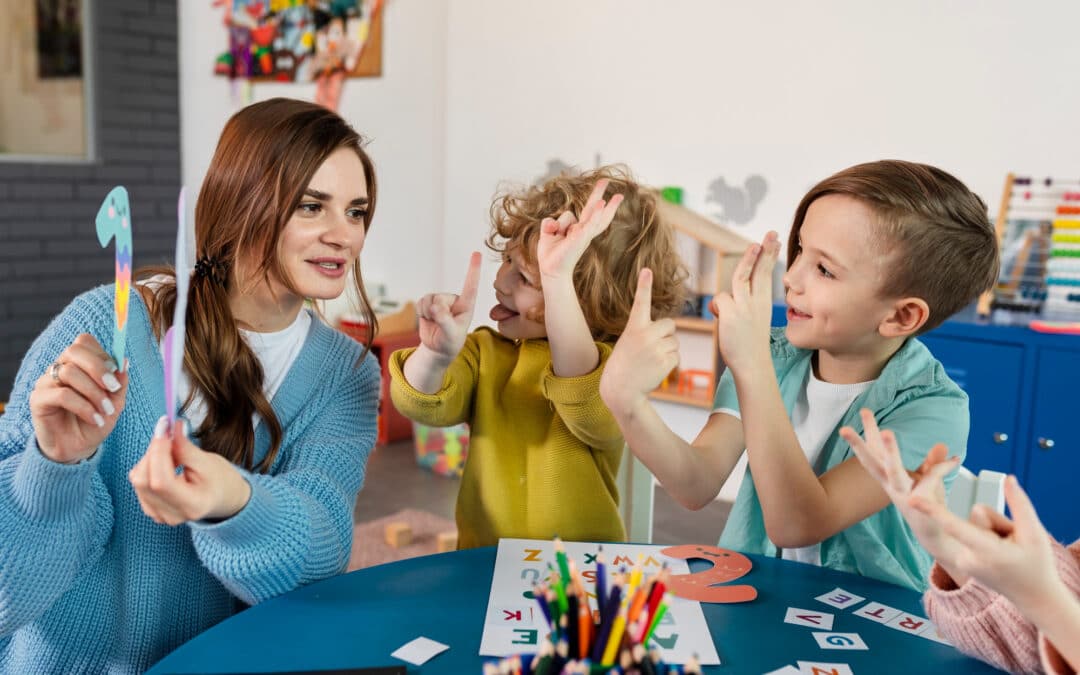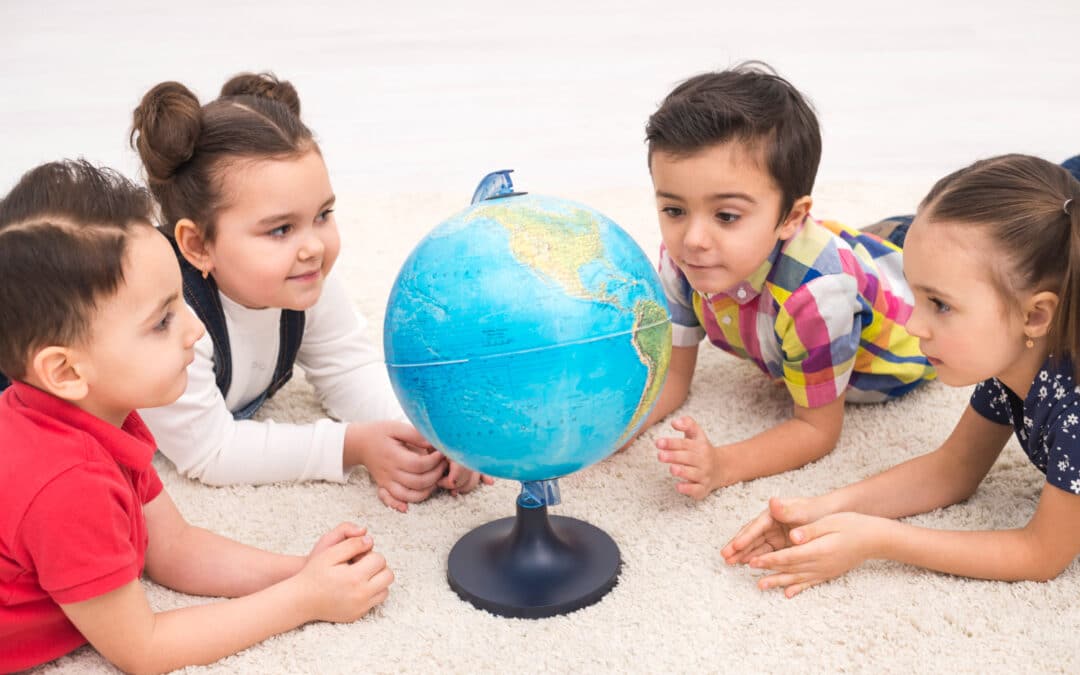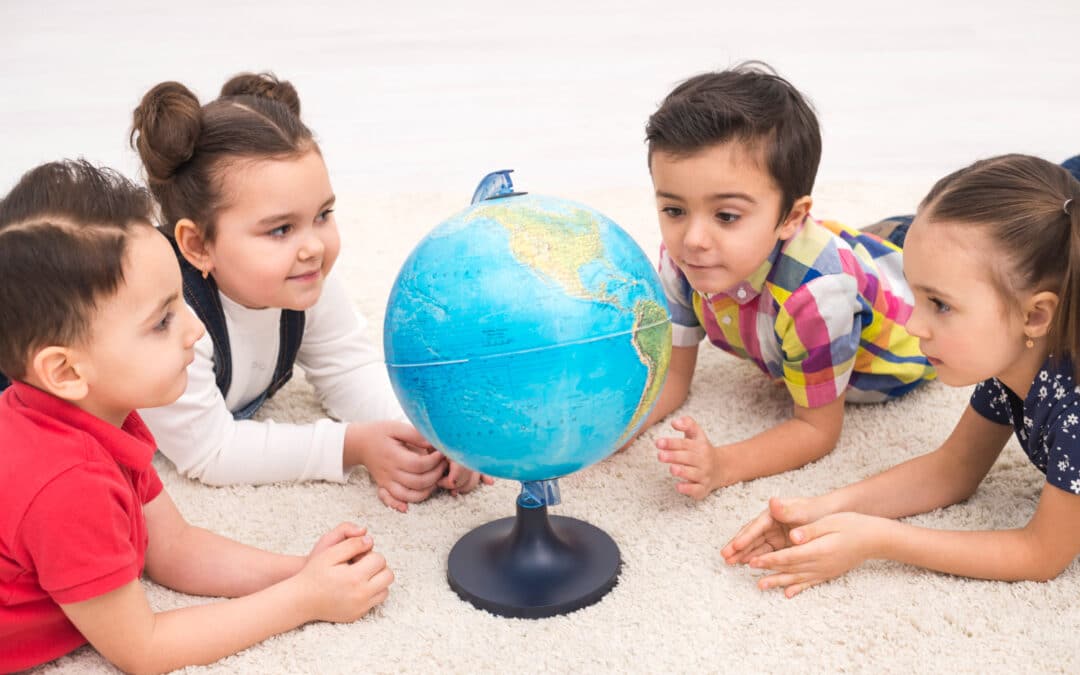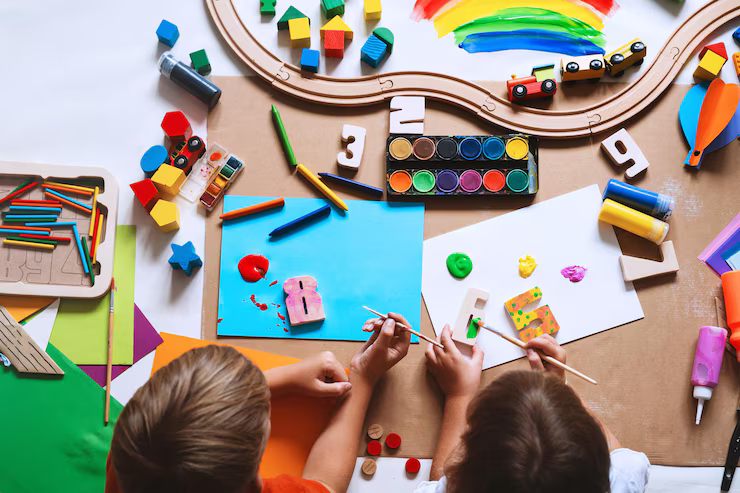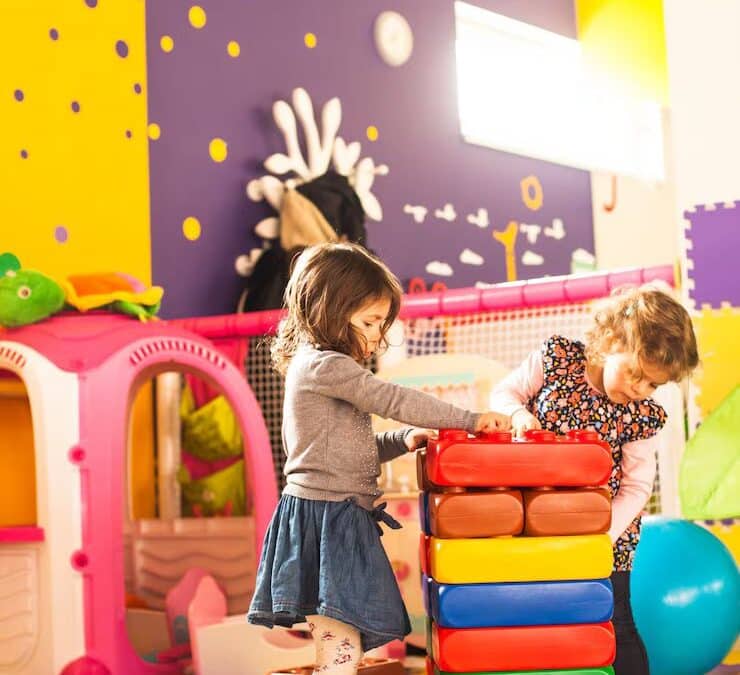Language immersion camps have become a powerful educational tool for children in Ahwatukee, offering an innovative approach to learning languages. These specialized programs create an environment where children naturally absorb new languages through daily activities, play, and cultural experiences.
Parents across Ahwatukee are discovering the transformative impact of these immersive learning experiences. The rising demand for multilingual education reflects our increasingly interconnected world, where proficiency in multiple languages gives children a significant advantage.
At the forefront of Ahwatukee’s language immersion scene is Amici Trilingual Montessori Preschool, which has pioneered a unique approach that combines:
- Mandarin immersion
- Spanish immersion
- English language development
- Montessori educational principles
This guide will take you through the essential aspects of language immersion camps, exploring their profound impact on children’s cognitive development, cultural awareness, and linguistic abilities. You’ll discover how these programs create an engaging environment where language learning happens naturally and effectively.
Whether you’re considering a language immersion program for your child or seeking to understand their educational benefits, this comprehensive guide will help you make informed decisions about your child’s language learning journey in Ahwatukee.
Understanding Language Immersion Camps
Language immersion camps represent a unique educational approach where children learn a new language through complete cultural and linguistic submersion. These specialized programs create an environment where students naturally absorb language skills through daily activities, games, and social interactions.
Key Components of Language Immersion Camps:
- Native-speaking instructors who communicate primarily in the target language
- Structured activities designed to encourage natural language acquisition
- Cultural elements integrated into daily routines
- Peer-to-peer learning opportunities in an immersive setting
Traditional language education often relies on memorization, textbook exercises, and structured grammar lessons. Language immersion camps take a radically different approach. Instead of studying about the language, children live the language through:
- Interactive play sessions
- Cultural celebrations
- Art and music activities
- Hands-on learning experiences
- Authentic conversations with native speakers
The cultural exposure component plays a crucial role in the learning process. When children experience the customs, traditions, and daily practices associated with a language, they develop:
Enhanced Learning Outcomes Through Cultural Integration:
- Deeper understanding of language context and usage
- Natural acquisition of proper pronunciation and intonation
- Authentic vocabulary building through real-life situations
- Cultural sensitivity and global awareness
- Increased motivation to communicate in the target language
Research shows that students in immersion programs develop stronger language skills compared to traditional classroom settings. The natural environment allows children to build confidence in their abilities while reducing the anxiety often associated with foreign language learning.
At immersion camps, you’ll find children participating in cooking classes using traditional recipes, learning traditional songs and dances, and engaging in cultural crafts – all while naturally absorbing the target language. This multi-sensory approach creates meaningful connections between language and real-world experiences, leading to more effective and lasting language acquisition.

Types of Language Immersion Programs
Language immersion programs offer diverse approaches to meet different learning needs and goals. Here’s what you need to know about the main types:
Full Immersion Programs
In full immersion programs, students spend 90-100% of their time learning in the target language. All subjects are taught in the secondary language, with English instruction typically beginning around grades 2-3. An example of this approach is Amici Trilingual Montessori, where native Mandarin and Spanish speakers conduct daily activities exclusively in their languages.
Partial Immersion Programs
Partial immersion programs involve students spending approximately 50% of instructional time in each language. Core subjects are divided between English and the target language, with math and science often taught in English while language arts and social studies are delivered in the target language.
Dual-Language Programs in Phoenix
Several schools in Phoenix offer dual-language programs, including:
- Desert Willow Elementary School (Mandarin-English)
- Pueblo Elementary School (Spanish-English)
- Kyrene de los Lagos Elementary (Spanish-English)
- Age-Specific Program Structures
Different age groups have specific program structures tailored to their developmental needs:
- Early Childhood (Ages 2-5): Play-based immersion activities such as songs, games, and storytelling that focus on natural language acquisition with heavy emphasis on listening and speaking skills.
- Elementary Level (Ages 6-11): Structured language instruction integrated with academic subjects like reading and writing skill development along with cultural activities and projects.
- Summer Camps: Short-term intensive programs featuring theme-based learning activities, cultural celebrations and events, as well as flexible scheduling options.
Your child’s age, learning style, and language goals will guide your choice between these program types. Each model offers unique advantages, with full immersion providing the most intensive language exposure and partial immersion allowing balanced development in both languages.
Benefits Beyond Words: Cognitive, Linguistic, and Cultural Advantages of Language Immersion Camps
Language immersion camps create powerful learning experiences that extend far beyond basic language acquisition. Research shows these programs trigger significant developmental advantages in three key areas:
Cognitive Development
These are the cognitive benefits your child can gain from language immersion camps:
- Enhanced executive function skills
- Improved mental flexibility and problem-solving abilities
- Stronger memory retention and recall
- Better multitasking capabilities
- Advanced pattern recognition skills
Linguistic Growth
Your child develops natural language abilities through:
- Real-time conversation practice with native speakers
- Authentic pronunciation and intonation learning
- Contextual vocabulary building
- Organic grammar acquisition
- Rapid language processing skills
Cultural Intelligence
Immersion camps create cultural bridges through:
- Direct exposure to cultural traditions and customs
- Interactive cultural activities and celebrations
- Development of cross-cultural communication skills
- Understanding of diverse perspectives
- Building genuine appreciation for different worldviews
At Amici Trilingual Montessori’s immersion programs, students engage in daily activities that naturally integrate these benefits. A typical day might include solving math problems in Mandarin, creating art projects while speaking Spanish, or participating in cultural celebrations that bring languages to life.
Research from cognitive scientists demonstrates that children in immersion programs develop stronger neural connections and enhanced brain plasticity. These neurological advantages translate into practical benefits – students show improved academic performance across subjects, not just in language studies.
Cultural exposure in immersion settings helps children develop empathy and adaptability. Through daily interactions with teachers and peers from different cultural backgrounds, students naturally develop the social skills needed to thrive in our interconnected world.
Parents report seeing their children display increased confidence in social situations, improved problem-solving approaches, and a natural curiosity about different cultures after participating in immersion programs.
The Montessori Approach to Language Learning in Immersion Programs
The Montessori philosophy transforms language learning with its unique child-centered approach. Dr. Maria Montessori’s method perfectly complements language immersion programs, fostering a natural and interactive learning atmosphere.
Key Elements of Montessori Language Learning:
- Prepared Environment: Carefully designed spaces feature language-specific materials and cultural elements that spark children’s natural curiosity
- Mixed-Age Classrooms: Younger children learn from older peers while older students reinforce their knowledge through teaching
- Hands-On Learning: Children engage with physical materials representing language concepts
- Freedom of Choice: Students select activities based on their interests, promoting active engagement
The Montessori method respects each child’s unique learning pace and style. At Amici Trilingual Montessori, teachers act as guides rather than traditional instructors, observing children’s interests and providing appropriate materials and activities.
Daily Language Learning Activities Include:
- Cultural exploration through music, art, and practical life exercises
- Self-correcting materials that build confidence and independence
- Sensorial experiences connecting language to physical objects
- Small group interactions promoting natural conversation
This approach creates an organic learning environment where children absorb languages through meaningful experiences. The combination of Montessori principles with language immersion produces remarkable results – children develop strong linguistic foundations while maintaining their enthusiasm for learning.
The multi-sensory nature of Montessori education supports language acquisition by engaging all learning pathways. Children touch, see, hear, and experience language in context, creating lasting neural connections and deep understanding.
Choosing the Best Language Immersion Camp for Your Child in Ahwatukee
Finding the right language immersion camp for your child can be a transformative decision, enhancing their cognitive skills, cultural awareness, and language proficiency. Here’s a comprehensive guide to help you choose the best program:
Program Structure and Curriculum
The foundation of any successful language immersion experience lies in its program design. Evaluate:
- Daily Schedule and Activities: Look for a well-rounded schedule that combines structured lessons with engaging activities.
- Language Exposure Time: Programs should maximize the time your child spends immersed in the target language.
- Integration of Cultural Elements: A strong curriculum includes cultural learning, making language use relevant and fun.
- Balance Between Learning and Play: Ensure there’s a healthy mix of formal instruction and play-based learning.
- Progress Tracking: Ask about assessment tools and feedback mechanisms to monitor your child’s growth.
Staff Qualifications
The people guiding your child are crucial to a positive experience. Consider:
- Native-Speaking Instructors: Native speakers offer authentic language exposure and pronunciation.
- Educational Background and Certifications: Verify teaching credentials and specialized training in language instruction.
- Student-to-Teacher Ratio: Smaller groups mean more individualized attention.
- Experience with Young Learners: Teachers should have a track record of working effectively with children.
Practical Considerations
The logistics of the program impact convenience and your child’s enjoyment. Review:
- Location and Accessibility: Choose a camp that is easy to reach.
- Program Duration and Flexibility: Look for options that fit your schedule.
- Age-Appropriate Groupings: Children should be grouped by age and language proficiency.
- Cost and Payment Plans: Understand tuition fees and available payment options.
- Before/After Care Availability: Extended care can be helpful for working parents.
Safety and Environment
Safety and a welcoming environment are non-negotiable. Inspect:
- Security Measures: Ask about visitor policies, child pick-up procedures, and supervision.
- Emergency Protocols: Ensure the camp has clear procedures for medical emergencies and other incidents.
- Cleanliness and Maintenance: Check that classrooms and play areas are clean and well-maintained.
- Age-Appropriate Facilities: Safe and suitable learning materials and play equipment are essential.
Cultural Integration
Language immersion is most effective when it’s paired with cultural learning. Look for:
- Authentic Experiences: Cultural celebrations and hands-on activities that reflect traditions.
- Music, Arts, and Storytelling: Exposure to traditional songs, crafts, and stories.
- Food and Customs: Opportunities to taste traditional dishes and learn about customs.
Tips for Evaluating Camps in Person
Whenever possible, visit camps during their operating hours. Observe:
- Children’s Engagement: Are the children actively participating and enjoying the activities?
- Teaching Methods in Action: How are lessons structured, and are they interactive?
- Classroom Dynamics: Notice the interaction between students and teachers.
- Cleanliness and Organization: Check the overall hygiene and orderliness of the facility.
- Staff Interactions: Observe how staff members communicate with children—look for warmth, patience, and encouragement.
Additional Questions to Ask
- Parental Communication Policies: How often will you receive updates on your child’s progress?
- Learning Styles and Special Needs: Ask how the program accommodates different learning styles or special needs.
- Sample Schedules and Curriculum Outlines: Request these to get a clearer picture of the daily structure.
- Trial Classes or Observation Periods: Many quality programs offer the option to observe or participate before committing.
By carefully considering these factors and doing your due diligence, you can confidently select a language immersion camp that provides a safe, enriching, and memorable learning experience for your child.
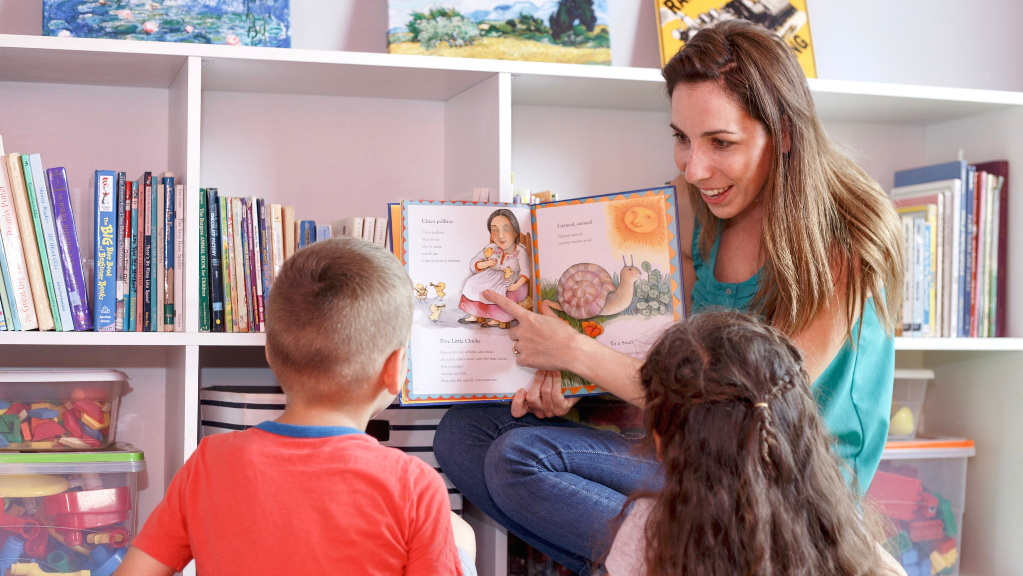
Evaluating Local Options: Amici Trilingual Montessori Preschool as a Case Study
Amici Trilingual Montessori Preschool stands out in Ahwatukee’s educational landscape with its distinctive three-language immersion approach. Located at 1244 E. Chandler Blvd., this institution combines Mandarin, Spanish, and English instruction within a Montessori framework.
Key Program Features:
- Native-speaking teachers for each language
- 1:3 teacher-student ratio
- Full immersion environment
- Age-appropriate programs from infancy to age 7
The school’s unique trilingual approach creates an authentic language environment where children learn organically through daily interactions. Each classroom features three specialized educators:
- A lead Montessori-certified guide
- A native Mandarin-speaking teacher
- A native Spanish-speaking teacher
Cultural Integration:
The curriculum integrates monthly thematic units exploring Chinese and Hispanic cultures through:
- Traditional songs
- Cultural art projects
- Authentic literature
- Cultural celebrations
- Multicultural music programs
Specialized Learning Components:
- Yoga sessions
- Martial arts training
- Ballet classes
- Gardening activities
- Computer coding introduction
The school’s holistic approach extends beyond language acquisition. Their mission emphasizes developing children’s natural curiosity through diverse experiences. Students engage in hands-on activities designed to foster independence while building linguistic competence in three of the world’s most spoken languages.
Facility Features:
- Purpose-designed learning spaces
- Age-appropriate Montessori materials
- Cultural learning corners
- Outdoor exploration areas
- Dedicated spaces for specialized activities
This comprehensive approach creates an immersive environment where children naturally absorb languages while developing essential life skills through the Montessori method.
Success Stories & Testimonials from Parents Who Enrolled Their Children in Language Immersion Camps
The impact of language immersion camps at Amici Trilingual Montessori resonates through the experiences shared by parents in the Ahwatukee community.
“Within just three months, my daughter went from knowing zero Mandarin to confidently counting and singing songs in Chinese. The natural, immersive environment made all the difference.” – Sarah M., mother of a 4-year-old
Parents report significant developmental milestones:
- Enhanced Social Skills: Children form friendships across cultural boundaries
- Improved Cognitive Abilities: Students demonstrate better problem-solving capabilities
- Natural Language Acquisition: Kids switch between languages without hesitation
“My son now corrects my Spanish pronunciation! The cultural activities at Amici’s summer camp sparked his interest in learning about different countries.” – James T., father of a 5-year-old
The success stories extend beyond language proficiency:
- A 3-year-old mastering basic conversations in three languages
- Preschoolers spontaneously teaching siblings new words
- Children displaying increased confidence in social situations
“The transformation was remarkable. My shy daughter blossomed into a confident communicator, eager to practice her new language skills with native speakers at our local community events.” – Lisa R., mother of a 3-year-old
These real-world experiences highlight the profound impact of immersive language learning on children’s development, creating a foundation for lifelong multilingual abilities and cultural appreciation.
Conclusion: Embracing Multilingualism Through Language Immersion Camps – A Worthwhile Investment for Your Child’s Future!
Your child’s journey to multilingualism represents a powerful investment in their future success. Language immersion camps, particularly in Ahwatukee, offer unique opportunities for children to develop essential skills that extend far beyond language acquisition.
The path to multilingual proficiency requires active parental engagement. Here’s how you can support your child’s language learning journey:
- Stay involved in your child’s learning process by practicing target languages at home
- Create opportunities for cultural experiences outside the camp environment
- Connect with other families in the language immersion community
- Track progress through regular communication with camp instructors
Amici Trilingual Montessori’s immersion programs demonstrate the transformative power of combining language learning with cultural education. Their approach nurtures children’s natural curiosity while building strong foundations in Mandarin, Spanish, and English.
The gift of multilingualism opens doors to:
- Enhanced cognitive abilities
- Broader cultural perspectives
- Increased global opportunities
- Strong social connections
Take the first step today – explore Ahwatukee’s language immersion options and give your child the advantage of multilingual education. Contact Amici Trilingual Montessori at 480-336-3364 to learn how their programs can shape your child’s future success in our interconnected world.

